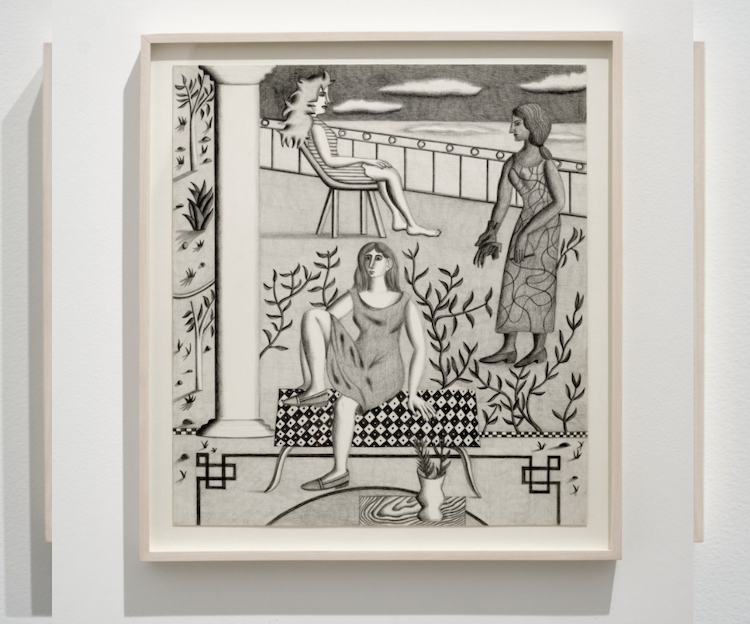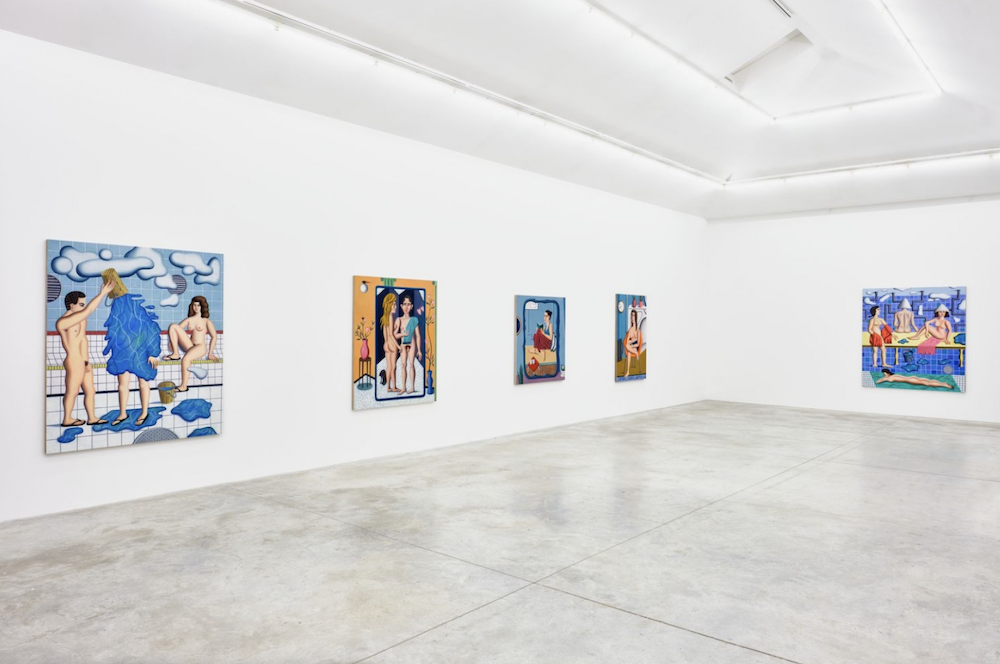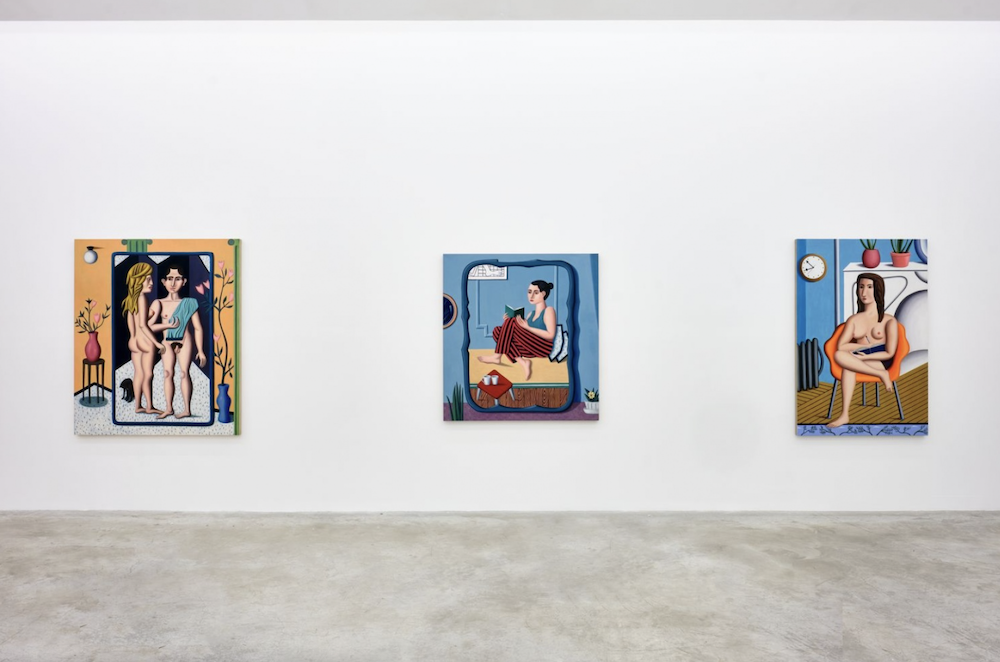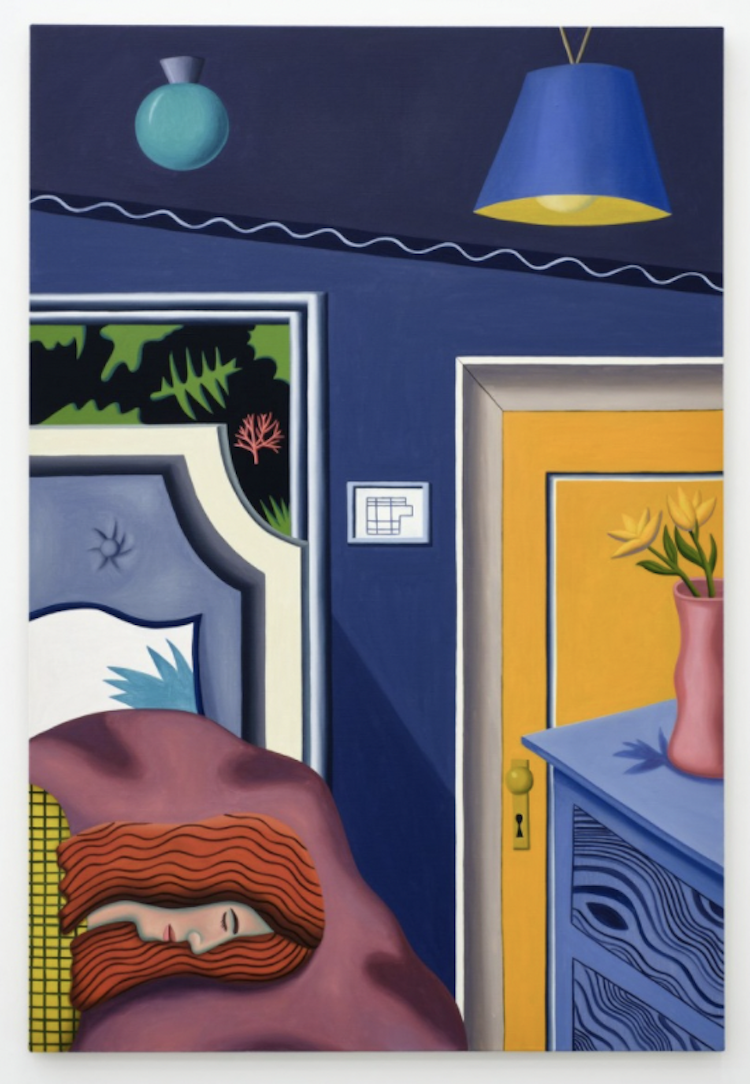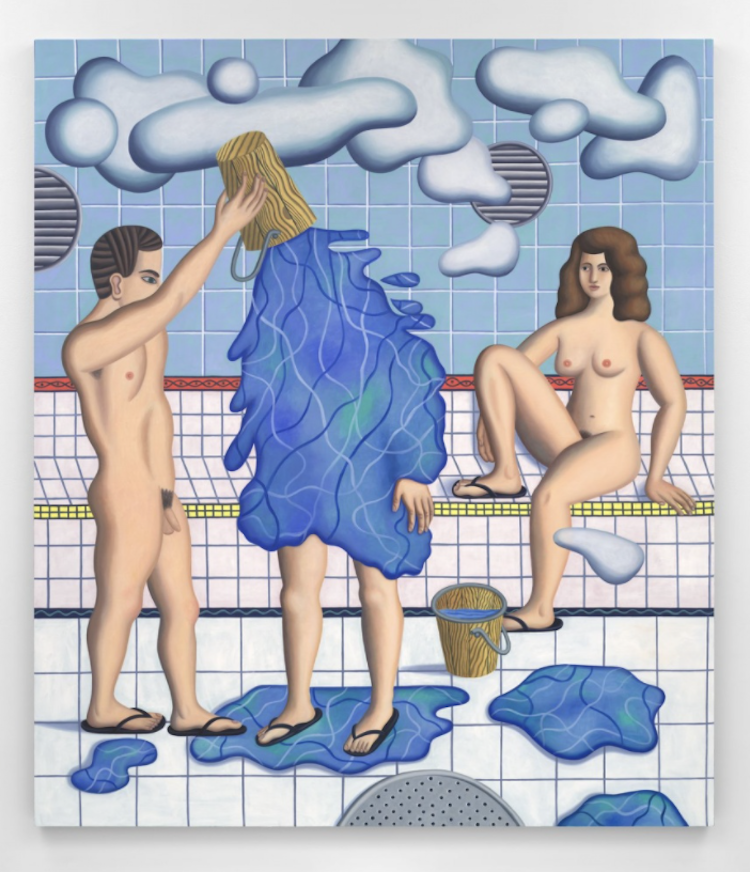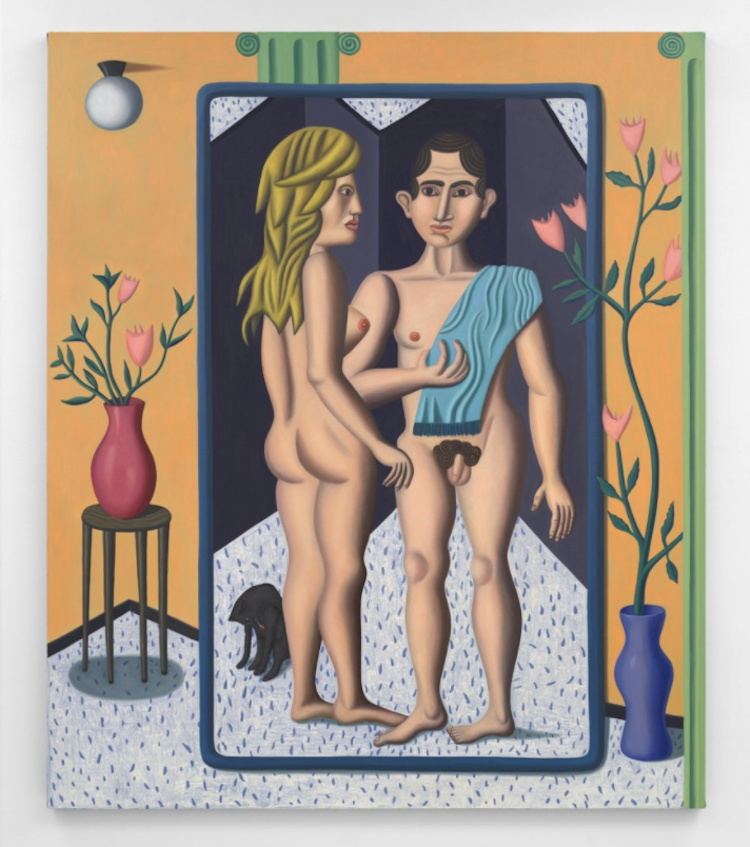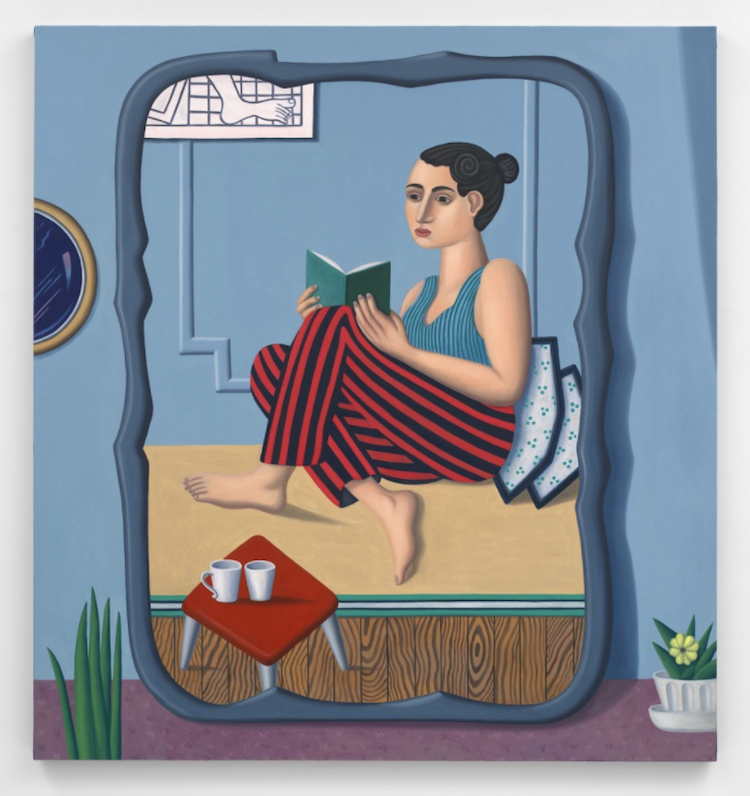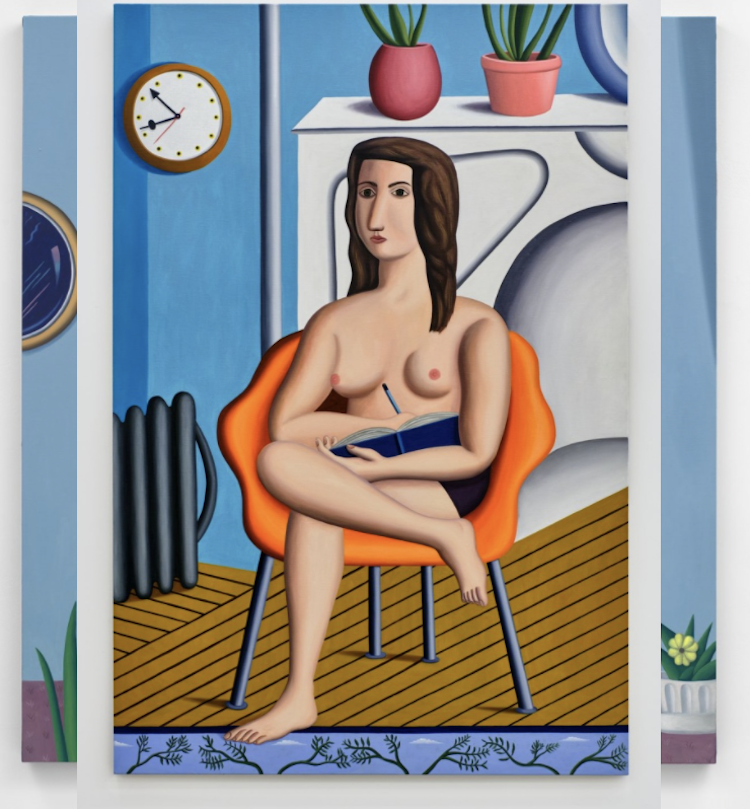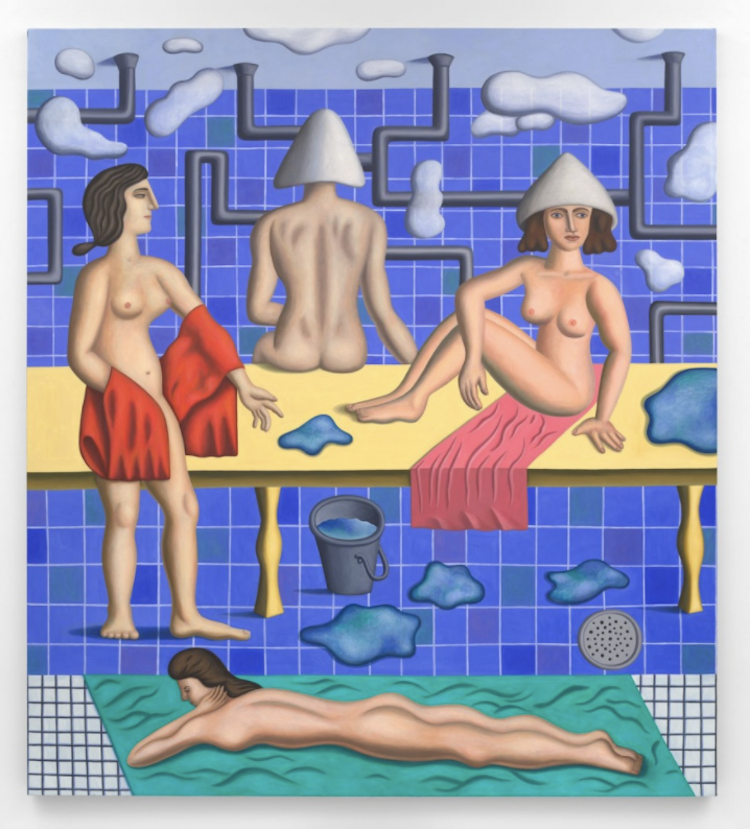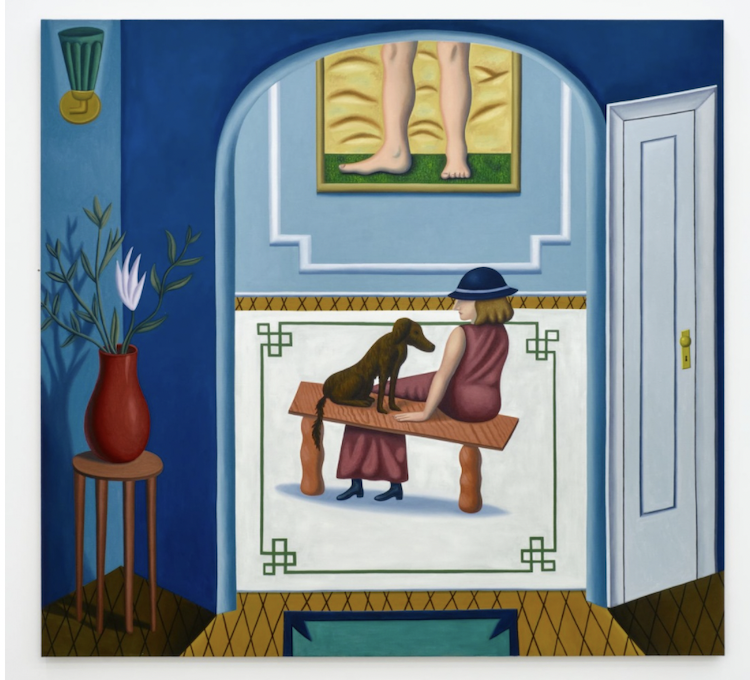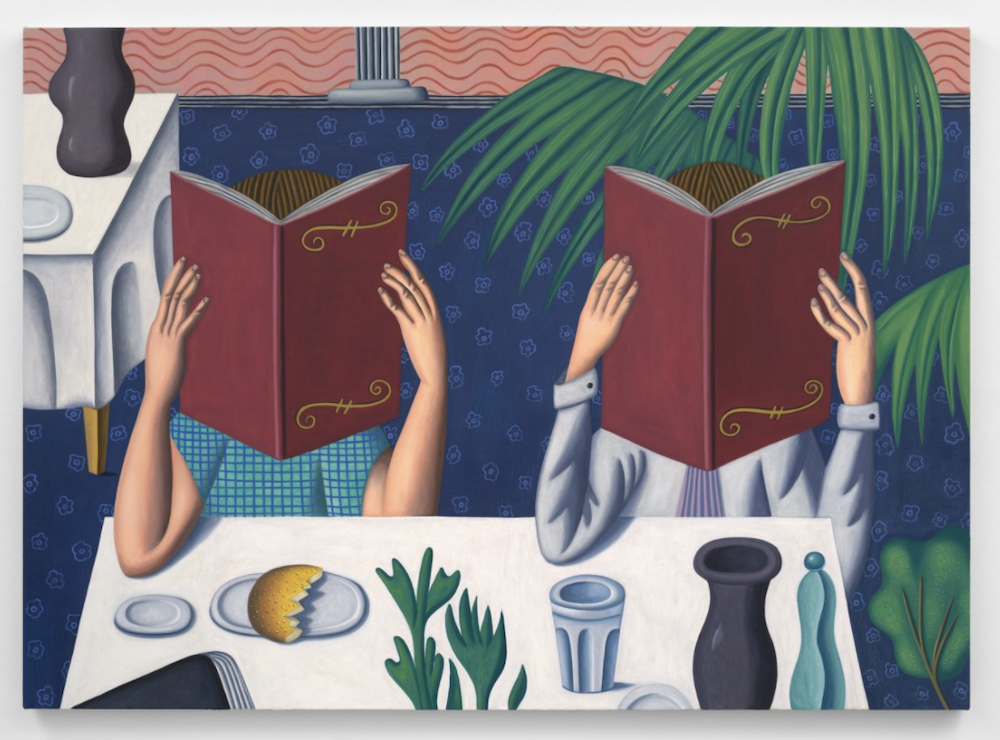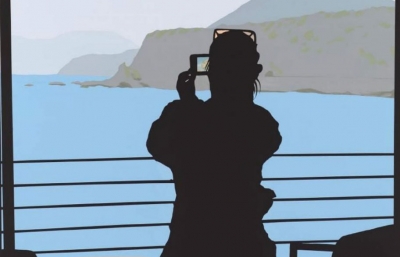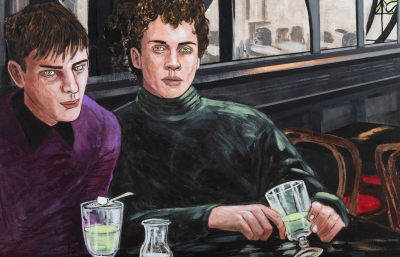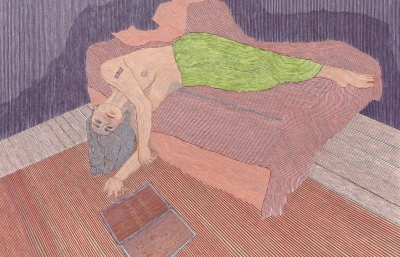Forming a homogeneous whole in both subject and style, Jonathan Gardner presents ten new paintings at Almine Rech in Paris.
Going further than painting the everyday, Gardner paints leisure. His figures are occupied with recreational activities: consulting a restaurant menu, reading a book, taking a bath, gardening, collecting, reading on the beach... Subjects that, in his own words, "are not dramatic, but have potential for introspection."
Gardner's painting is figurative, not realistic: the perspectives are exaggerated, like Giorgio de Chirico's buildings; sometimes he borrows the strategies of Cubism to depict the space; and the textures (the wood or iron of a bucket, the metal legs of a coffee table), as well as the characters’ expressions, are rendered subtly. Each element is strategically elevated to its most simplified point of legibility, and while the action is unmistakable, the way in which the characters experience the action remains in question. They seem to live in an ideal world, incredibly peaceful, where emotion is ready to spring forth. It is as if the spectator had a carte blanche to complete the narrative. This parallel world, stylized and idealized, impeccable, where the hairstyles are always perfectly arranged, brings with it the sort of anxiety that often characterizes surrealism.
As has often been noted, there is no system of hierarchy between the elements that make up the painting. A pipe is treated with the same intensity as a character or an element of furniture or decoration. Each element is brought to an equivalence that invites us to look at these paintings in their abstract dimension. This invitation is emphasized by Gardner's use of color blocking, and the grids and lines that cause the composition to prevail over the narrative. Some of the paintings on display depict bathhouse scenes, and Jonathan Gardner tells us that these scenes were born from the memory of an afternoon at the Russian Baths in Manhattan in 2019. But nothing of this personal experience is recounted. In Bathhouse (2001) for example, the very tone of the action is reduced to its minimum. The intricate, geometric network of plumbing, the regular grid formed by the tile floor, and the clouds of steam are treated as abstract forms.
In sum, while his painting presents itself to us with a certain simplicity and obviousness, it quickly reveals its strangeness - and its complexity. Clearly, it also brings to mind the styles of earlier painters (Fernand Léger, Balthus, Magritte, de Chirico, Le Corbusier, David Hockney, Le douanier Rousseau). But the absurdity of this eclectic list, which puts opposites together, soon becomes apparent: what could link these painters if not this very style?
— Eric Troncy, Director of Consortium Museum, Dijon and Editor-in-chief of Frog Magazine

